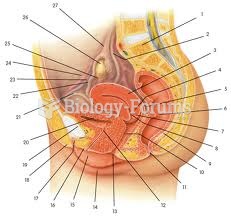Answer to Question 1
E
Answer to Question 2
Swimming, or nektonic, organisms include invertebrate squids, fish, sea turtles, and marine mammals. Most squid possess long, slender bodies with paired fins and must remain active to stay afloat. However, a few species, such as Sepia and Spirula, have a hollow gas-filled chamber in their bodies to help them remain afloat and so they can be less active. Squid can swim about as fast as any fish their size and do so by drawing water into their body cavity and then expelling the water out through their siphon, propelling themselves backward. Fish use a variety of fins for swimming. Most commonly, movement is achieved as a fish alternately contracts and relaxes its myomeres on either side of its body, generating a curvature that travels the length of its body, ending in the tail or caudal fin and generating thrust. This type of swimming motion is called thunniform. In some cases, fish sacrifice speed for maneuverability, such as in crowded reef environments, or for camouflage by moving only their small transparent fins. As a result, other types of swimming motions involve using various sets of fins. Although all marine mammals have an aquatic existence, their ancestors were land animals. Some whale ancestors had small, unusable hind legs, suggesting that the land mammal predecessor had no need for its hind legs when it developed a large paddle-shaped structure for a tail used to swim through water. Other fossils show a remarkable progression of skeletal adaptations for an increasingly aquatic existence, such as the migration of the blowhole (nostrils) toward the top of the head, upper vertebrae that become increasingly fused, shrinking hip and ankle structures, and jawbone and ear components adapted for under-water hearing. Polar bears are a marine mammal with massive webbed paws that make them excellent swimmers. The polar bear's fur is thick, and each hair is hollow to trap air for better insulation; the hairs also function like fiber optic cables by channeling sunlight to the animal's dark/black skin that absorbs heat from sunlight.







